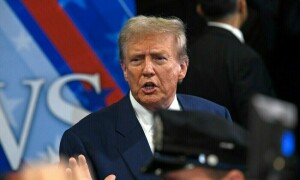“If India is computer, Congress is its default programme,” Rahul Gandhi told a Congress workshop in August last year. Today, only nine months later, India’s political disk has been formatted and possibly reprogrammed—with the BJP winning a majority on its own and form the first non-coalition government outside Congress in India’s history.
The trigger behind India’s political reprogramming came from Congress’s own failings. The last ten years of its rule were marked by high-profile corruption scandals, red tapism and other forms of bad governance, persistent inflation-–that hit its highest in 20 years-–and low economic growth coupled with fiscal and external deficits.
Meanwhile, India faced what Pakistan has also been facing in the last decade: growing urbanisation, increased level of awareness, and a ballooning youth population. Only in India’s case, it broke the mould of its age-old dynastic and community-based voting pattern.
A recent survey by India’s Lok Foundation, which is a group of NGO working towards political inclusion, showed that sluggish economic growth and inflation were the top concerns among voters. So much so, another survey in Uttar Pradesh noted in 2011, that 70 percent of the respondents said they would prefer a politician who would deliver public goods, whereas only 20 percent said they would vote for someone based on caste, clan or community.
Add to that the aggressive drum-beating, by Narendra Modi (India’s PM-elect) and his fellow campaigners, about Modi’s performance as chief minister Gujarat. The phenomenal economic growth in Gujarat, which came on the back of typical liberal market economic policies, was touted and compared against the slowing economic performance in India at large.
But make no mistake. It’s not as if that Gujarat was the fastest growing state in India. Commenting on Gujarat’s performance in the last decade, Maitreesh Ghatak, Professor of Economics at London School of Economics wrote that “while Gujarat’s overall record is undoubtedly very good all through the last three decades, its performance in the 2000s does not seem to justify the wild euphoria and exuberant optimism about Modi’s economic leadership”.
In his recent article at Outlook India, Ghatak and his co-writer Sanchari Roy from University of Warwick, point out that other Indian states-–such as Bihar, Maharashtra, Haryana, Punjab, Kerala, Bihar and Tamil Nadu—grew as much and with better performance in Human Development Indicators that Gujarat can boast.
There are many a lessons to be learnt from what has happened in India this season. But, due to paucity of space, this column would restrict to two.
First, Pakistan’s dynastic ruling parties should be warned that the same could happen to them. Nothing lasts forever, and their failure in the delivery of public goods could uproot them sooner or later.
Writing a piece on University of Nottingham’s ‘India Votes’ blog, the renowned political scientist at LUMS, Mohamamd Waseem, aptly noted that “the Pakistani voter is closer to the Indian voter than any other voter in the world in terms of polling on the basis of caste or caste-like system of biradri, tribe, shifting factional loyalties as well as religious and ethnic identities as the sources of intense electoral mobilization”.
But this does not mean that the system cannot be changed. Waseem pointed that the interest of Pakistan’s media and civil society in Indian elections is oriented more towards the result rather than the process. Taking a cue from his argument, this column would advise the media, and the civil society to learn how India broke its dynastic moulds, and emulate the same at home, instead of only focussing on how would Modi’s India deal with Pakistan
On that note, Modi also presents an example for the change-aspirants in Pakistan’s politics. His media advocacy, sharp political marketing and drum beating about the Gujarat-model, to an epic presidential-style campaign-–all offer some food for thought.
At 63 years of age, Modi flew 300,000 kilometres and addressed 457 back to back rallies across the lengths and breadths of India during the last nine months. With that kind of ambition and aggressive politicking, India’s voting mould had to be broken.
TAILPIECE: WHAT’S IN FOR PAKISTAN?
Modi may have announced an end to “the age of divisive politics” in India; he may have won on developmentalist agenda and not a Hindutva agenda; and BJP may be the only Indian party that can successfully pursue trade and investment ties with Pakistan. But habits and memory die hard, which is why nothing could be said for certain at the moment.
Tanvi Madan, a Fellow at Brookings Institution, says “there’s a possibility that Modi will take a more hawkish line. This is especially likely if, in the first six months or so of his government, there is a major terrorist attack in India or on Indians abroad that can be traced to elements in Pakistan. This is not a far-fetched scenario—terrorist groups might see the period of political transition as an opportunity to derail any chance for peace.”
Madan is right. Given Modi’s boyhood association with the RSS, which was also heavily involved in his campaign, Modi’s aggressive personality is not likely to let him sit back and settle things diplomatically. His alleged involvement in the Gujarat violence and scores of other human rights concerns-–such as the extrajudicial killings between 2003-2006-–point to the fact that he is trigger happy can-do person.
Already, Ravi Shankar Prasad, senior BJP leader, who is expected to be India’s new foreign minister, told UK’s Guardian newspaper that while “BJP wishes well for Pakistan, the neighbouring state needed to understand that “terrorism promoted from its soil would not be tolerated”. Pakistan would have to tread cautiously.
BR100
12,305
Decreased By
-186.6 (-1.49%)
BR30
37,415
Decreased By
-278.7 (-0.74%)
KSE100
114,853
Decreased By
-1335.9 (-1.15%)
KSE30
35,217
Decreased By
-533.1 (-1.49%)






















Comments
Comments are closed.